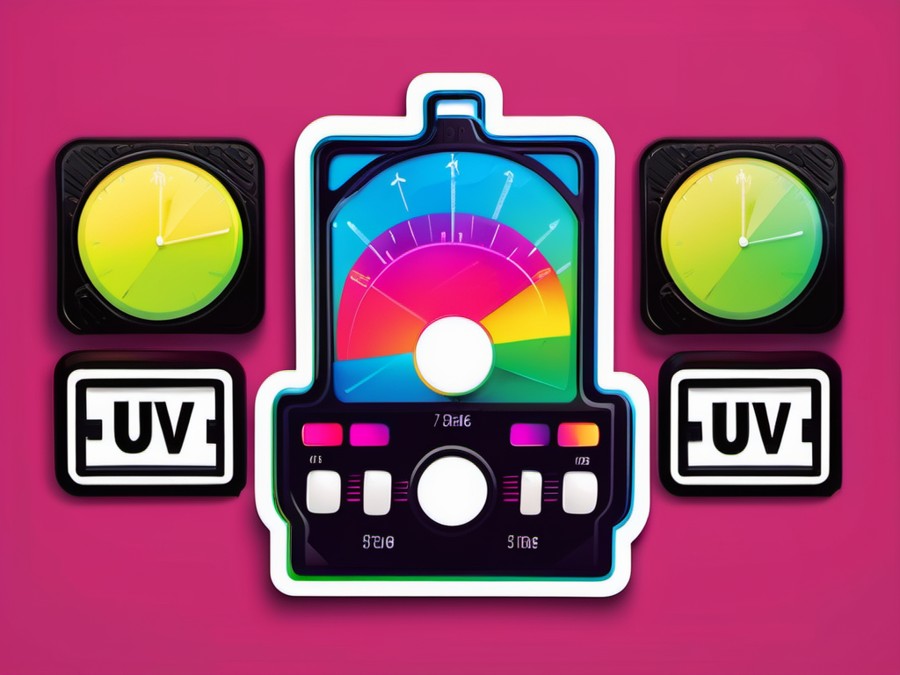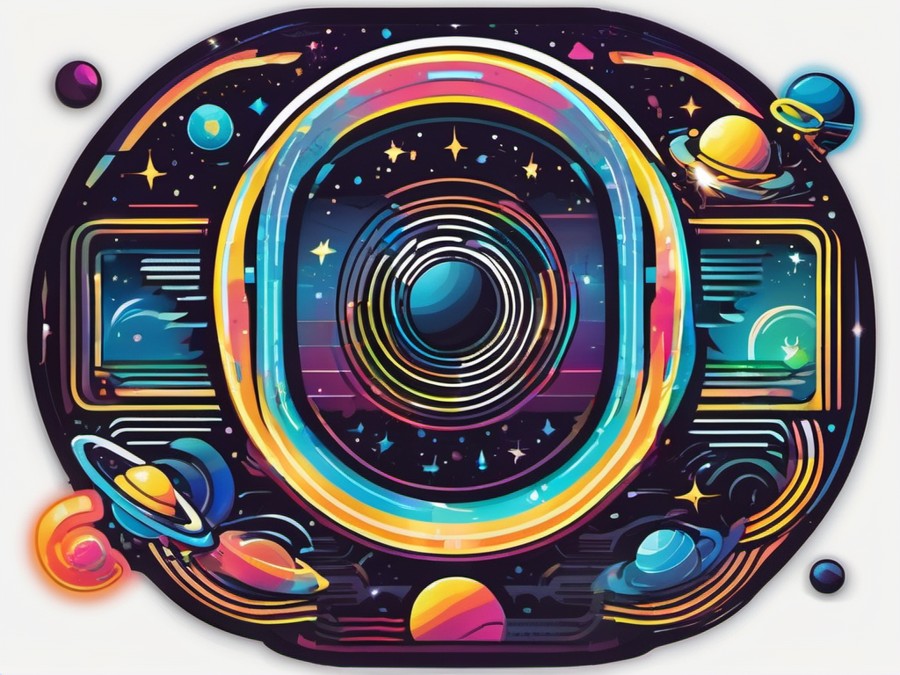· Charlotte Will · Light Meters & Accessories · 9 min read
What is a Lux Meter and How Does It Work?
Discover what a lux meter is and how it works, along with its various applications in lighting design. Learn about different types of lux meters and how to choose the right one for your needs.

Understanding light measurement is crucial in various fields, from photography and film production to commercial lighting design. Among the essential tools for this task is a lux meter. But what exactly is a lux meter, and how does it work? This article will delve into the intricacies of these devices, exploring their functions, applications, and the science behind them.
Introduction to Lux Meters
What is a Lux Meter?
A lux meter, also known as an illuminance meter or light meter, is a device designed to measure the amount of light that falls on a surface. This measurement is expressed in lux, which is the standard unit for illuminance.
Brief History and Evolution
The concept of measuring light has been around for centuries, but the modern lux meter evolved significantly with the advent of photography and film. Early photographers used light meters to ensure proper exposure. With advancements in technology, lux meters have become more accurate and versatile, finding applications in numerous industries.
Importance in Modern Lighting Measurements
In today’s world, accurate light measurement is vital for maintaining optimal conditions in various settings. Whether it’s ensuring adequate lighting in workplaces to enhance productivity or setting the perfect mood for a cinematic scene, lux meters play a pivotal role in achieving these objectives.
Understanding Lux and Illuminance
Definition of Lux
Lux is a unit of illuminance, measuring the amount of light that falls on a surface. It’s calculated as the amount of light per square meter. For instance, if you have 10 lux in your room, it means you have 10 lumens per square meter of light.
Difference Between Lux and Lumen
While lux measures the amount of light falling on a surface, lumen measures the total quantity of visible light emitted by a source. In simpler terms, lux is what you receive on the surface, whereas lumen is what’s emitted by the light source.
Importance of Illuminance in Lighting Design
Understanding and measuring illuminance is essential for effective lighting design. Whether it’s ensuring a well-lit workspace or creating an ambient atmosphere in a living room, accurate illuminance measurements help achieve the desired effects.
How a Lux Meter Works
Basic Principles of Illuminance Measurement
At its core, a lux meter measures the intensity of light directly falling on its sensor. The sensor converts this optical signal into an electrical one, which is then processed and displayed as a lux value.
Key Components of a Lux Meter
- Photo Sensor: This is the component that detects the light. Modern lux meters often use highly sensitive photodiodes to achieve accurate readings even in low light conditions.
- Display Unit: Displays the measured illuminance value, usually in lux.
- Power Source: Typically a battery, providing the electrical power needed for the device to function.
Measurement Process
- Calibration: Ensure the meter is calibrated to provide accurate readings.
- Positioning: Point the lux meter toward the surface from which you want to measure illuminance.
- Reading: The device processes the light detected by the sensor and displays the corresponding lux value on the screen.
Types of Lux Meters
Handheld Lux Meters
These are compact, portable devices ideal for quick and easy measurements. They are commonly used in field applications where versatility is key.
Digital Lux Meters
These advanced meters offer more features like memory storage, data logging, and integration with mobile apps. They are suited for applications requiring precise and detailed measurements.
Specialized Lux Meters
- For Industrial Use: These are rugged and designed to withstand harsh environments. They often come with additional safety features.
- For Photography and Film: These meters are calibrated to provide accurate readings in various lighting conditions, crucial for cinematographers and photographers.
Applications of Lux Meters
In Commercial Lighting
Lux meters help ensure that workspaces, offices, and retail environments are properly lit. This is not only crucial for productivity but also for safety and creating an inviting atmosphere.
In Photography and Film Production
Photographers and cinematographers use lux meters to achieve the perfect exposure for their shots. Understanding how light falls on subjects is vital for capturing high-quality images and video.
In Outdoor and Landscape Lighting
Landscapers and outdoor lighting specialists use lux meters to design and install effective lighting schemes. This can enhance the beauty of a garden or park while also providing security.
Safety Inspections in Industrial Settings
In industrial environments, lux meters are used to ensure that emergency exits, walkways, and work areas are adequately lit. This is crucial for maintaining safety standards and preventing accidents.
How to Choose the Right Lux Meter
Factors to Consider
- Accuracy and Precision: High precision is crucial for accurate measurements.
- Range of Measurement: Ensure the meter can measure within the range you need, from low to high lux levels.
- Ease of Use: A user-friendly interface is essential for quick and efficient measurements.
Top Brands and Recommended Models
Several reputable brands offer high-quality lux meters. Brands like Symphonie, Extech, and Gossen are known for their precision and durability.
Step-by-Step Guide to Using a Lux Meter
Preparing for Measurement
- Calibration: Always ensure the meter is calibrated according to the manufacturer’s instructions.
- Battery Check: Make sure the batteries are charged or newly installed to avoid inaccurate readings due to low power.
Taking a Reading
- Positioning the Meter: Hold the meter at a 45-degree angle to the surface from which you want to measure the light.
- Understanding the Display: Many lux meters have a simple LCD or digital display showing the measured value in lux.
Recording and Analyzing Data
- Logging Measurements: If your meter supports data logging, record measurements for further analysis.
- Adjusting Lighting: Based on the readings, you can adjust your lighting setups to achieve the desired illuminance levels.
Troubleshooting Common Issues
Inaccurate Readings
- Calibration: Ensure the meter is correctly calibrated.
- Environmental Factors: Check for external factors that might affect readings, such as interference from other light sources.
Battery and Power Problems
- Replace Batteries: If the meter is not turning on or giving inaccurate readings, replace the batteries.
- Charge Status: Ensure that rechargeable batteries are fully charged.
Damage to the Photo Sensor
- Cleanliness: Ensure the sensor is clean and free from debris or dust.
- Impact Damage: Inspect the sensor for any physical damage that might affect its functionality.
Maintenance Tips for Lux Meters
Cleaning and Care
- Regularly clean the sensor to prevent dust or dirt from affecting readings.
- Store the meter in a protective case when not in use to avoid accidental damage.
Storage Recommendations
- Keep the meter in a cool, dry place away from direct sunlight and excessive heat or humidity.
- Avoid placing heavy objects on the meter to prevent damage to the sensor and other components.
Regular Calibration Requirements
- Follow the manufacturer’s guidelines for regular calibration to maintain accuracy.
- Annual calibration is usually recommended, especially for professional use.
Advanced Features in Modern Lux Meters
Multiple Measurement Modes
Many modern lux meters offer various measurement modes, such as spot, average, and maximum readings. This versatility is useful for different types of lighting setups.
Integration with Mobile Apps
Some advanced models can connect to mobile apps, allowing for data logging, real-time monitoring, and easy sharing of measurement results.
Data Logging and Reporting
These features enable users to record multiple readings over time, which can be invaluable for long-term lighting analysis and reporting.
Case Studies: Real-World Applications of Lux Meters
Improving Workplace Lighting
A recent case study involved optimizing the lighting in an office space. Using a lux meter, it was determined that certain areas were underlit, leading to eye strain and reduced productivity. By adjusting the lighting setup based on lux meter readings, a more evenly lit environment was achieved.
Enhancing Museum and Gallery Displays
In a museum setting, lux meters were used to ensure that artworks were properly illuminated without causing damage from excessive light exposure. This balance is crucial for preserving the art while allowing visitors to appreciate it fully.
Setting Up Stage Lighting for Events
For a theatrical production, lux meters were employed to set up stage lighting that would create the desired mood and focus attention on key elements of the performance. The ability to measure and adjust light levels precisely was essential for achieving the perfect balance.
FAQs About Lux Meters
What is the difference between a lux meter and a light meter?
While both terms are often used interchangeably, a lux meter specifically measures illuminance (lux), whereas a light meter can measure other properties like luminous intensity and color temperature.
How often should I calibrate my lux meter?
The frequency of calibration depends on usage, but as a general rule, an annual calibration is recommended to ensure accuracy. Some professional users may opt for more frequent calibrations, especially if the meter is used daily.
Can a lux meter measure color temperature?
Most basic lux meters cannot measure color temperature. For this, you would need a specialized light meter that can detect both illuminance and color temperature.
What is the best lux range for indoor lighting?
For comfortable reading or working, a range of 300-500 lux is typically recommended. This level ensures adequate illumination without causing eye strain or discomfort.
How does a lux meter work in low light conditions?
Lux meters with sensitive photo sensors can still provide accurate readings in low light. However, the measurements may require longer integration times to capture enough light for an accurate reading.
Conclusion
Understanding how a lux meter works and its various applications is essential for anyone dealing with lighting, whether in a professional capacity or just for home use. By mastering the principles of illuminance measurement, you can ensure optimal lighting conditions in any setting.
What is a CWDM Transceiver and How Does it Work? discusses similar principles in the context of data transmission, highlighting the importance of accurate measurement tools across different fields.
What is a VHF Marine Antenna and How Does it Work? offers insights into another specialized tool, showing how understanding specific technologies can enhance safety and communication.
What is a monitor privacy filter and how does it work? delves into a different aspect of technology, demonstrating how understanding the mechanics behind tools can improve their effective use.
FAQs
What is the difference between a lux meter and a light meter? Lux meters are specifically designed to measure illuminance, while light meters can also measure other aspects like luminous intensity and color temperature.
How often should I calibrate my lux meter? An annual calibration is generally recommended, but frequent users may opt for more regular calibrations.
Can a lux meter measure color temperature? Most basic lux meters cannot, but specialized light meters can detect both illuminance and color temperature.
What is the best lux range for indoor lighting? For comfortable reading or working, a range of 300-500 lux is recommended.
How does a lux meter work in low light conditions? Lux meters with sensitive sensors can still provide accurate readings in low light, often requiring longer integration times.




